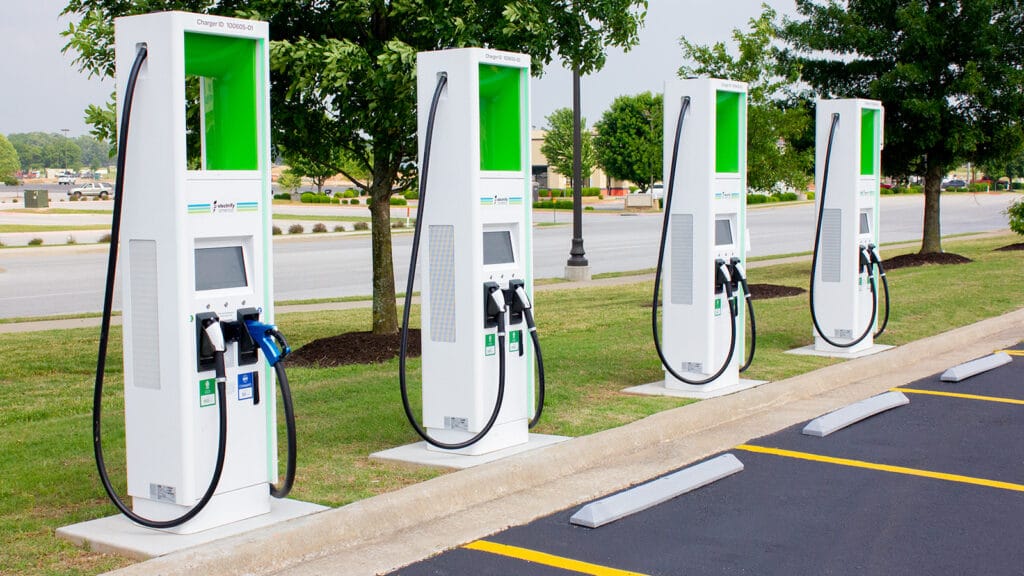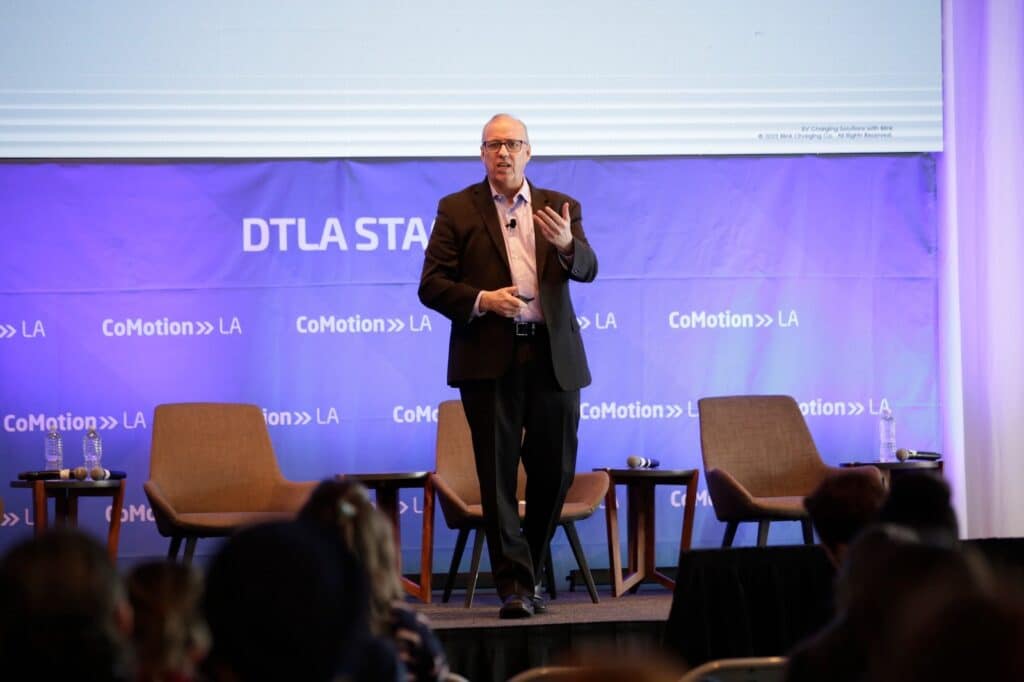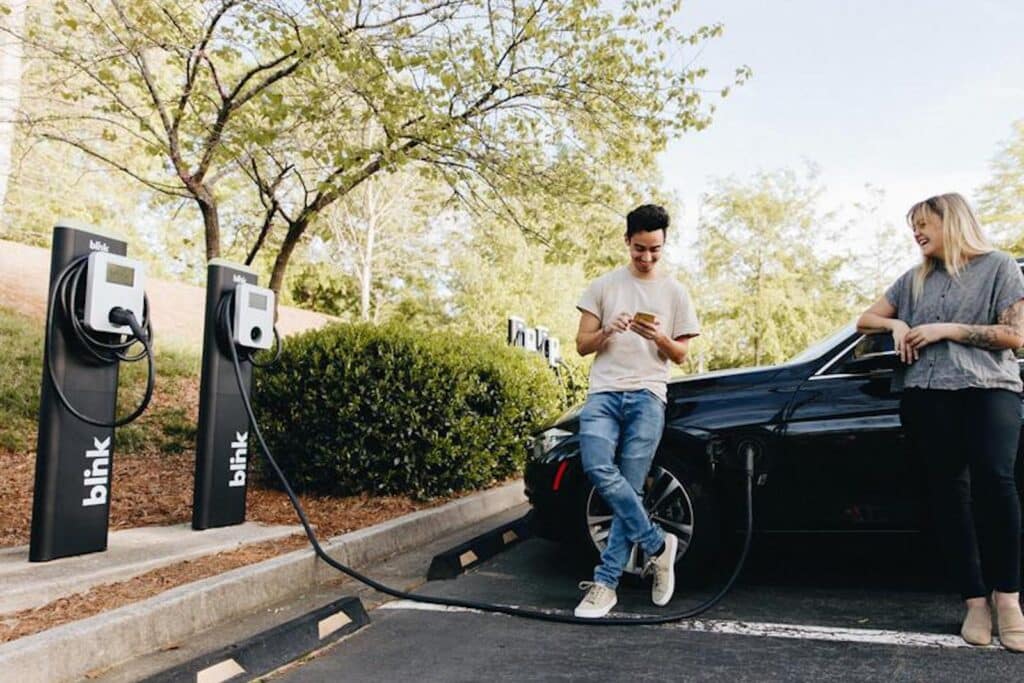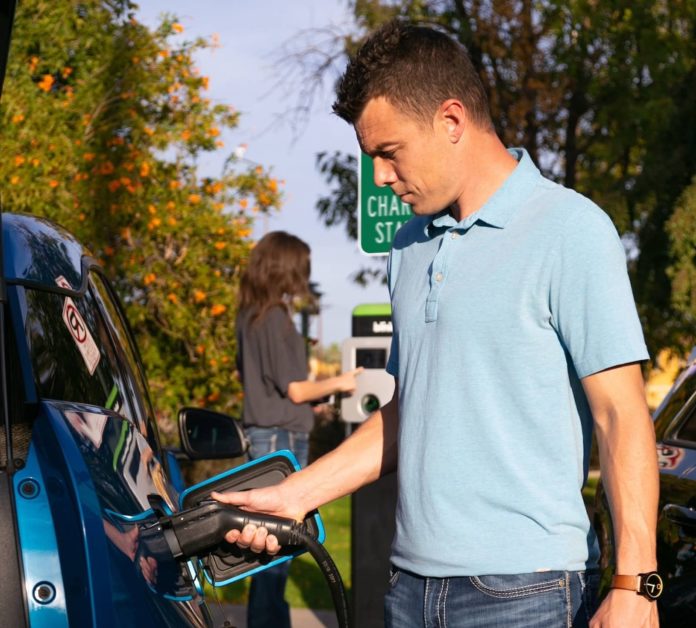More than a third of American motorists — 34%, to be precise — are thinking about buying a battery-electric vehicle, according to a new Reuters-Ipsos poll. Interest in EVs is rising fast, as are sales. They accounted for barely 1% of the U.S. new vehicle market in 2019, a figure that jumped to 5% last year. But there are reasons why even more Americans aren’t ready to plug in.
There’s range anxiety, of course, though with more and more new EVs getting 300 miles or more that’s becoming less of an issue. On the other hand, there’s the issue of charger anxiety. And it’s not just the lack of a robust public charging network. There’s also the problem of faulty chargers. A study released by the University of California Berkeley found that more than a quarter of the chargers in the San Francisco Bay Area weren’t functioning at any given time.
That’s a serious problem, acknowledged Brendan Jones, a longtime EV industry veteran who helped launch the Electrify America network and who now serves as president of Blink Charging, one of the largest producers, providers and operators of EV charging equipment. He talked with TheDetroitBureau.com about the challenges of keeping EV chargers operating and what his company plans to do about it. (This interview has been edited for clarity and brevity.)
TheDetroitBureau: I would call charging the number one concern EV owners and potential buyers have today. When I need to use a public charger myself, I’m already thinking about whether there’s another station nearby in case it doesn’t work. Why is this such an issue?
Brendan Jones: DC fast chargers are complex devices. All the manufacturers and operators are trying to work together to limit problems with charger reliability.
TDB: It really is a problem, isn’t it? That study from UC-Berkeley gives us an idea just how serious it is. And there’ve been other studies that seem to suggest the problem may be getting worse.

Jones: That was a wake-up call for the industry, when everybody looked at the scores and they were going backwards.
Identifying issues
TDB: But what’s the cause of the problems?
Gleason: The number issue is at the point of customer interaction. The credit card reader, the touchscreen. The mobile app. We need to prove the system to approve (the transaction) has redundancy built in. So, if there’s a failure on the mobile app there’s another way to initiate charging.
TDB: And how do you do that?
Jones: Part of that is investing in plug-and-charge capabilities (which pass billing information directly from the vehicle to the charger through the charge cable itself). We’re bringing all of our new public chargers to market that are capable of this. That way, you don’t have any interaction on the screen — no interaction with a credit card reader or a mobile app. That eliminates a point of failure.
TDB: But that can’t be the only problem, can it?

Jones: No. We have a lot of legacy chargers in the ground and many have operated on the only 2G and 3G (cellphone) networks. But the major carriers have (dropped) 2G and 3G. So, if a charger doesn’t get an upgrade and you plug into it you’re probably not going to be able to charge. We had dead chargers, as a result.
TDB: Are there other issues that have to be addressed?
Jones: The failures are mostly around these touchpoints. Then, after that, you’re getting into the components of the charger. You have failures in the (computer) board, the power supplies and the screen itself. Then there are modules that fail on modular chargers. Those make up the bulk of the failures. You might have a fan or a cable failure. And, of course, there’s vandalism which can cause a failure to charge.
Fixing the problems
TDB: What’s the solution?
Jones: We’re all working towards the same goal: improve quality across the board, (and) eliminate the points of failure. You have to have (near perfect) uptime. We’re revitalizing all our maintenance contracts and looking at the time to repair chargers to make sure that’s in line with what customers and host sites are demanding today. Frankly, we need to do a better job as an industry.

TDB: I can’t tell you how often I’ve run into problems using public chargers.
Jones: If we make charging inconvenient, we’re going the wrong way. We have to act together to make it convenient.
TDB: How?
Jone: What we’re trying to do here at Blink is to eliminate those points of failure. We’ve spent quite a lot of money over the last couple years. We said, scrap our old network, build a brand-new, state-of-the-art network. If we have to do (software) development we can do it on the spot. We don’t use third parties. Our developers are in-house. They’re on payroll. I don’t have to wait. We can do it on the fly. And we’re now controlling our own (charger) manufacturing, I’ve got my own manufacturing, my own development, my own firmware. The result is higher quality in the network and higher customer experience.
TDB: It’s great to replace old gear, but charger operators are putting a focus on putting in new equipment in more locations. How long do you think it will take before EV owners really see things come together?
Jones: I think there’s a lot of work that has yet to be proven out but we’re getting better with the redundancy factor. When we started out, we were doing a lot of single-charger installations. We didn’t have redundancy. Out in the middle of nowhere you need a four-charger installation. Closer to the suburban/urban rim, where most charging takes place, you’ve got to have eight, nine, 10, just like at a gas station today. And you can’t have 50% of them down. We need to maximize the customer charging experience.
Let’s get it right. We know where the failures are. We know what we need to do to improve. The industry has got to come together and do it.

